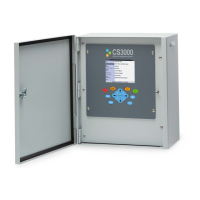CS3000 User’s Guide
Calsense 81
Appendix B - Soil Types
Identifying the specific soil type at a site allows for better water management and healthy plants.
Different soil types require different runtimes, cycles, and soak times. There are many different methods
to finding out soil types. One simple test to do in the field is the “Mason Jar Test.” For this test, fill a
mason jar halfway with the site’s soil sample and fill with water. Shake the jar for several minutes and
then set aside for 2 hours. During this time, the soil particles will settle and separate. The bottom layer
will be heavier particles such as sand or rocks. The middle layer will be silt. The top layer will be clay.
Determine the percentage of each layer and use the table below to determine the soil type. For a more
detailed and accurate soil description, collect a sample from the site to send to the nearest soil lab.
Controller Behavior
The expected controller behavior is influenced by the type of soil type selected.
Expected Controller Behavior
Infiltration/Permeability
Expected Controller Behavior
Short runtimes, long soak time, and
multiple cycles
Short runtimes, long soak time, and
multiple cycles
Longer runtimes than clay but shorter
cycles and soak times
Short Runtimes with short cycles and
soaks
Short Runtimes with short cycles and
soaks
Longer runtimes, short soak times, and
minimal cycles
Longer runtimes, short soak times, and
minimal cycles

